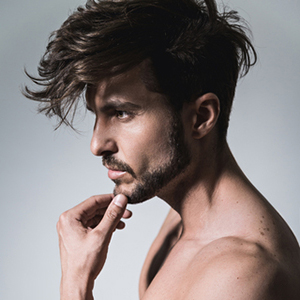Male grooming, one of beauty’s most dynamic segments, has undergone an irreversible change over the past several years, reaching a USD 4.5 billion mark in 2016, with an over 3% growth rate. With our Male Grooming Products: U.S. Market Analysis and Opportunities report close to publication, Kline’s expert Naira Aslanian reveals some exciting highlights from it.
What drives the male grooming market?
The market is driven by increasingly aware male consumers putting more emphasis and effort into the way they look and feel, fueled by the easy accessibility of products through the Internet, which continues to propel the sector forward. In addition, the increased purchasing power of millennial men, who follow trends set by look-conscious celebrities, such as Jared Leto and Leonardo DiCaprio, take the notion of self-care to a different level with perfectly groomed beards and men buns. The desire to associate themselves with a lifestyle synonymous with success and well-being turns male consumers to barbershops and male-centric salons offering personalized services and pampering.
What categories are performing better than others?
Some categories in male grooming perform better than others. Skin care products, while remaining the smallest category in male grooming, records the strongest growth of over 8%. High impact products, such as anti-aging creams, eye creams, tinted moisturizers, and even masks, have taken shelf space in both luxury and mass retailers alike.
Shaving products, the second fastest growing category with over 6% growth, is driven by direct selling brands, such as Bevel, Harry’s, and Dollar Shave Club, which have recorded phenomenal growth rates with triple- and double-digit growth rates.
Deodorants and antiperspirants, the largest category, continues to record solid growth of 4.5%, supported by the launch of innovative products pioneered by leaders like Unilever through launches of technology in dry spray formats.
Can you talk more about the competitive landscape?
The top four leading companies—Unilever, Procter & Gamble, Colgate-Palmolive, and L’Oréal—account for half of the market share. Unilever is the leader in the category, with no sign of slowing down. The company’s advancement through innovation in deodorants and the acquisition of Dollar Shave Club give it a strong footing in the two important categories in male grooming.
We have seen the rise of many small, independent brands, often started in garages, catering to beards, buns, hair, skin care, all trying to make a mark in this market.
How do you see the market evolving in the next five years?
The evolution of male grooming is set to continue with 3% growth, with an increasing number of men taking time and spending money on products to enhance their appearance and the way they feel. Male-centric salons and barbershops, recently on an upswing, will continue to cater to increasingly demanding male consumers with more service offerings and products. The market will continue seeing new indie brands offering products targeted specifically to men. However, the pace at which new entrants flood the market is expected to slow. A number of the new players that have entered the category will gain increasing shelf space at stores and salons alike, while others may not be able to hold on at a strong pace to gain prominent market share.
To learn more about men’s care world, please refer to Kline’s reports – Male Grooming Products: U.S. Market Analysis and Opportunities and Barbershops: Global Market Brief, which reveal solid market stats about these niche but very promising markets.

